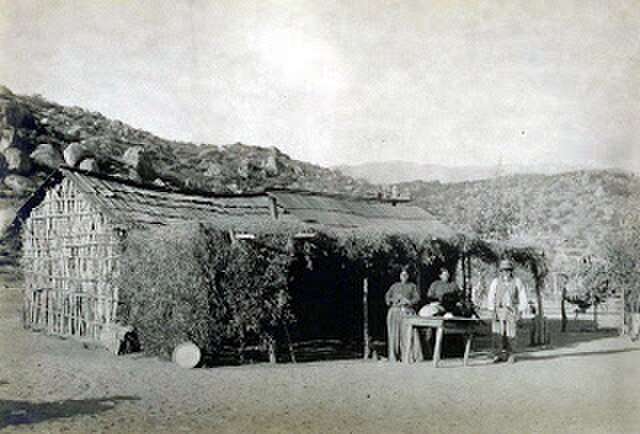Fritz William Scholder V was a Native American artist, who produced paintings, monotypes, lithographs, and sculptures. Scholder was an enrolled member of the La Jolla Band of Luiseno Indians, a federally recognized tribe of Luiseños, a California Mission tribe. Scholder's most influential works were post-modern in sensibility and somewhat Pop Art in execution as he sought to deconstruct the mythos of the American Indian. A teacher at the Institute of American Indian Arts (IAIA) in Santa Fe in the late 1960s, Scholder instructed prominent Native American students.
Fritz Scholder
The American Indian, Fritz Scholder, oil on linen, 1970. Indian Arts and Crafts Board Collection, Department of the Interior, NMAI
Indian Image (1972) at the Smithsonian American Art Museum in 2023
Future Clone, Fritz Scholder, bronze sculpture, 1999, George Gustav Heye Center, NMAI
The Luiseño or Payómkawichum are an Indigenous people of California who, at the time of the first contacts with the Spanish in the 16th century, inhabited the coastal area of southern California, ranging 50 miles (80 km) from the present-day southern part of Los Angeles County to the northern part of San Diego County, and inland 30 miles (48 km). In the Luiseño language, the people call themselves Payómkawichum, meaning "People of the West." After the establishment of Mission San Luis Rey de Francia, "the Payómkawichum began to be called San Luiseños, and later, just Luiseños by Spanish missionaries due to their proximity to this San Luis Rey mission.
Drawing of Luiseño men in traditional dance regalia, by Pablo Tac (Luiseño, 1822–1844)
Luiseño basket maker outside of her home
Luiseño home in 1900 in the Temescal valley
Group of Luiseño men at Pala








